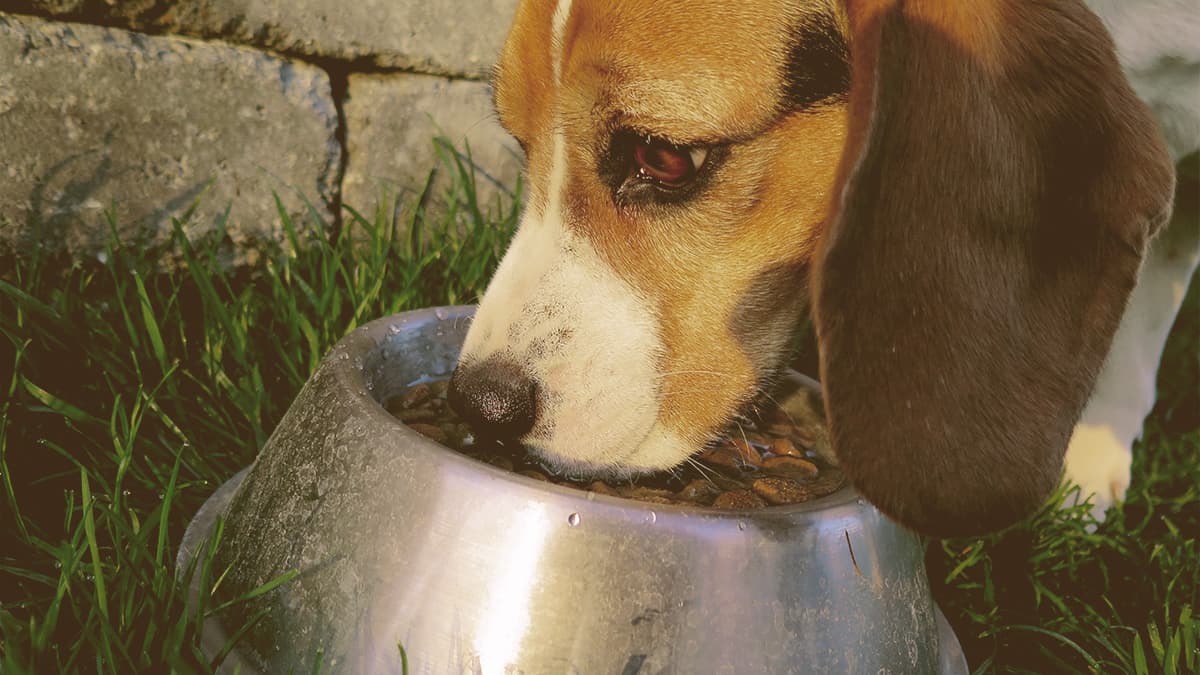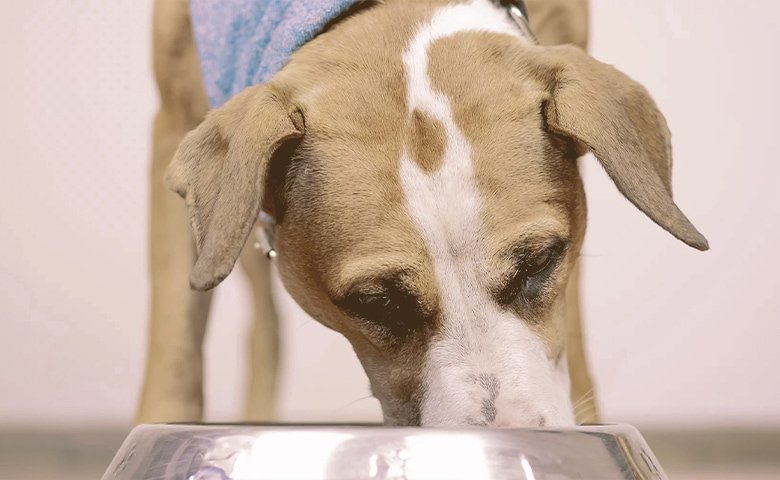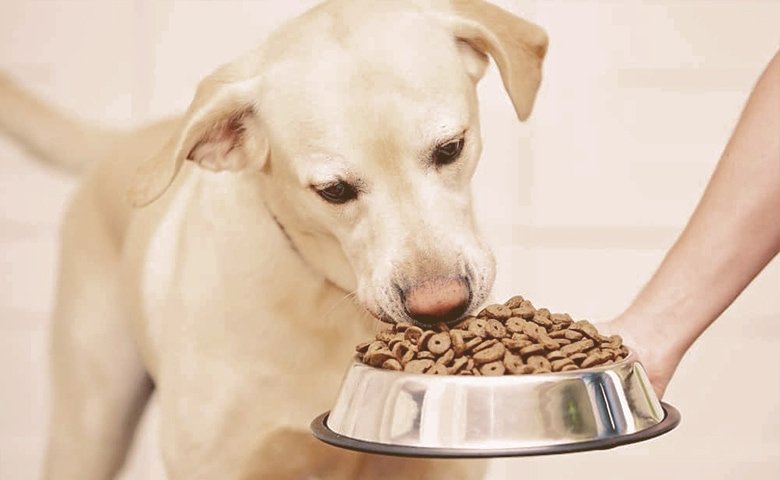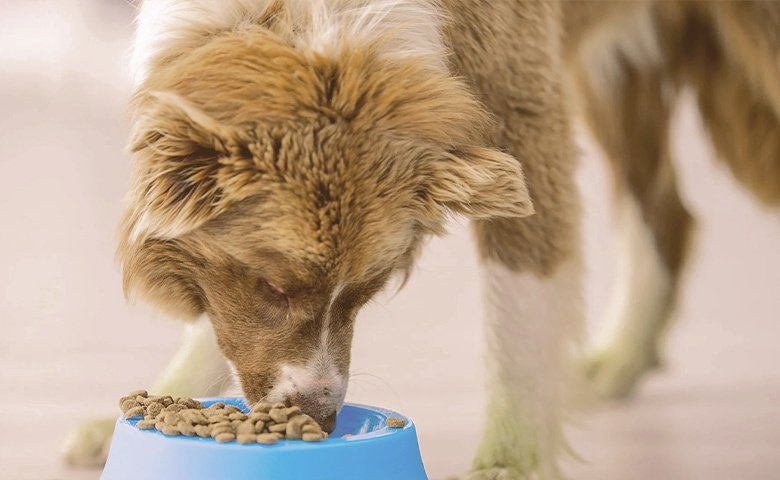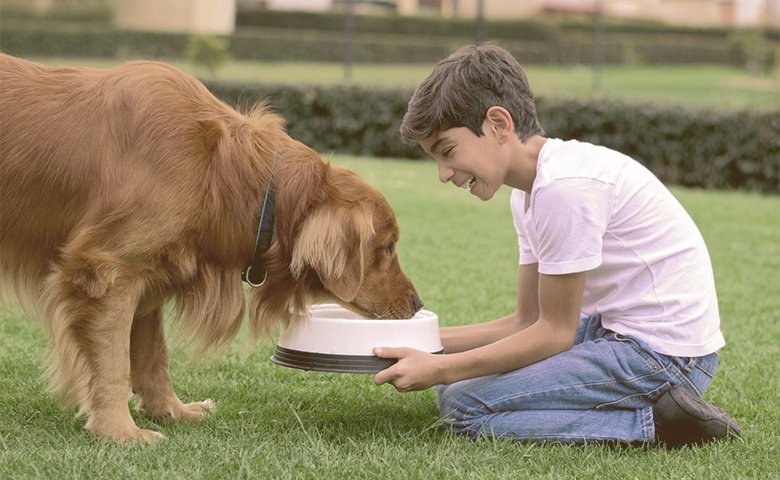5 Best High Fiber Dog Food for Anal Gland Problems in 2025
Alex Vicente • Updated on August 17, 2023
- This review contains affiliate links. Read more here.
- Not a substitute for professional veterinary help.
In my opinion, the best high fiber dog food for anal gland problems is the Taste of the Wild Appalachian Valley Dry Dog. I have also tested a few more brands so do scroll down to see my top choices.
Knowing your dog is suffering from a health condition can leave you feeling very helpless. In some situations, there may be little you can do, but when it comes to anal gland problems, you can take steps to help your dog feel better.
Find out how dog food choices and a high fiber diet can help cure or reduce problems with anal glands. See how choosing the best high fiber dog foods for anal gland problems can let you give your pooch some relief.
Best High-Fiber Dog Food for Anal Gland Problems Reviews
There are many options on the market for dog foods that are high in fiber. It can make choosing the right one tricky, especially if you don’t know where to start. To help you out, here is a review of five of my favorite brands that can help your pooch to avoid anal gland problems.
Before you get started, I’d like to let you know that you can check AAFCO’s recommendations for selecting the right food for your pet for extra information.
This grain-free formula provides digestible energy and excellent nutrition for your growing puppy. Made with real roasted meat and a blend of protein sources, this hearty formula offers a taste sensation like no other. Vegetables and fruits deliver natural antioxidants to help support a healthy lifestyle. Your puppy craves a taste of the wild.
Out of all the foods on my best high fiber dog food for anal gland problems list, this one from Taste of the Wild provides the widest range of protein options, which are always the number one ingredient. Your dog can enjoy venison, buffalo, bison, lamb, beef, salmon, or duck. The dry food also contains a variety of fruits and vegetables.
It is grain-free with probiotics and antioxidants. It provides adequate fiber for digestive support in the form of garbanzo beans and dried chicory root. The ingredient list also includes berry blends, tomatoes, chelated minerals, amino acids, prebiotic fiber, and omega fatty acids. What you will not find in this food is grain, corn, wheat, fillers, artificial flavors, colors, or preservatives.
- Pros
- Small breed available
- Made in the USA by a family-owned business
- Taste good
- Firm stool
- Cons
- Possible formula change causing stomach upset
- No chicken option, which is popular with many dogs
- Expensive options if you have a large dog
- Firm stool
Give your dog food that raises the bar with Natural Balance.
Formulated with a limited list of premium protein and carbohydrate sources, this L.I.D. Limited Ingredient Diets formula is excellent when you are seeking alternative ingredients for your pet.
From Natural Balance, this dry food covers a lot of the points you want for anal gland health. It is grain-free and doesn’t contain fillers, artificial flavors, or artificial colors. It comes in bags ranging from four pounds to 26 pounds. It is available in formulas for puppies, adults, and seniors.
The food provides a natural source of fiber for your pup with sweet potatoes, essential vitamins and minerals, and premium ingredients. You can choose from fish, chicken, duck, bison, or venison.
Natural Balance tests the food for contaminants and developed it with the help of nutrition experts and veterinarians. Plus, the company offers a 100% money-back guarantee.
- Pros
- Helps with allergies
- Firms stool
- Works for sensitive stomachs
- Great for picky eaters because of the multiple flavor options
- Cons
- Some reported quality control issues with foreign objects and mold
- Kibble may be too large for small breeds
- Doesn’t contain probiotics
- Great for picky eaters because of the multiple flavor options
ALSO READ: Best High-Fiber Dog Food
Your dog deserves the absolute best — like quality dog food with simple ingredients and essential nutrients that you can trust.
The Rachael Ray Nutrish line of dry foods comes in bags from six pounds to 40 pounds. It features quality ingredients chosen for the benefits they’ll offer your dog. Ingredients include brown rice and beet pulp for fiber, chicken fat as a source of omega-3s, and peas and carrots for essential vitamins and minerals.
You’ll also get quality farm-raised proteins, such as turkey, beef, and chicken. The food also contains natural prebiotics. None of the foods in the line contain artificial flavors or preservatives, nor do they contain by-products, artificial fillers, or wheat. While not all the food in this line is grain-free, there are grain-free options available.
- Pros
- Small breed option available
- Firms stools
- Reduces gas
- Dogs think it tastes great
- Cons
- Does contain food fillers that are common allergens (soy meal, corn gluten meal)
- Quality issues with mold in the past
- Concerns over new parent company and quality of ingredients
- Dogs think it tastes great
BLUE Wilderness natural dry dog food satisfies the spirit of the wolf in your canine with more of the meat dogs love. This high protein, grain free formula starts with delicious, protein-rich salmon, features antioxidant-rich LifeSource Bits and is enhanced with vitamins, minerals and other nutrients.
Available in bags sized 4.5 pounds to 24 pounds, this dog food comes from Blue Buffalo. Protein flavor options include salmon, chicken, and duck. Other ingredients include peas, potatoes, sweet potatoes, carrots, blueberries, and cranberries.
What this food does not contain is corn, wheat, or soy. It is also void of artificial flavors and preservatives. Using only quality ingredients, it has no chicken or poultry by-products, and the recipe always has 30% protein. Blue Buffalo also packs it with a blend of essential vitamins, minerals, and antioxidants in what it calls Lifesource Bits.
This food ensures a rich mix of ingredients to support muscle development, energy, strong bones and teeth, joint health, and skin and coat health. It also provides an immune system boost. All options are free of grain as well to protect sensitive pups.
- Pros
- Good for dogs with allergies and picky eaters
- Provides a variety of ingredients for a great taste
- Doesn’t contain grain
- Helps make coats shiny
- Cons
- Inconsistent quality after ownership change in the company
- Contains chicken meal
- May be too hard for small dogs
- Helps make coats shiny
Your dog will do a happy dance when you fill their dog food bowl with NUTRO NATURAL CHOICE Adult Dry Dog Food. This healthy dog food recipe starts with farm-raised chicken as the first ingredient, a high quality protein source canines love.
While this is a weight control food, it also works as a best high fiber dog food for anal gland problems. The weight loss support formula is a careful blend of fiber and protein, so that is why this is on my list.
Nutro packs this food with essential antioxidants, vitamins, and minerals. Your pup can enjoy either chicken, beef, salmon, or lamb flavors. Protein is always the first ingredient, but it also contains other beneficial ingredients, including sweet potatoes and lentils.
This food does not contain GMOs, artificial flavors or colors, or chicken by-product meal. It is also free of corn, soy, and wheat.
You can buy this food in up to a 30-pound bag with many different size options. It also comes in puppy, adult, or senior formulas.
- Pros
- Small breed available
- Plenty of fiber for firm stool
- Boosts energy
- Very effective for weight loss
- Cons
- May have cross contaminants from GMO products due to manufacturer GMO products at the same facility (noted on the label)
- May cause gas when first switching
- Boosts energy
- Very effective for weight loss
The Function of Anal Glands
Before you can learn more about using food choices to make your dog feel better, you need to learn a little about the anal glands. According to VAC, the anal glands are pouches located on each side of the anus. They contain sweat glands that produce a foul-smelling fluid.
The glands store the liquid until your dog contracts its anal muscles, at which time the gland squeezes, and the fluid releases through the anus. It usually happens when your dog has a bowel movement. Some dogs will release the fluid when nervous or excited as well.
All dogs have these glands. They serve the purpose of creating a unique scent that identifies your pup. Dogs will sniff the droppings of other canines or greet each other with a sniff to the rear to identify them by this unique scent.
Anal Gland Problems Explained
The issue with anal glands is that they release the fluid through small ducts, which are prone to clogging. If the duct clogs, it causes the fluid to back up in the gland. As it sits, the liquid thickens, which causes the gland to overfill.
The gland will swell, and infection may set in, which is painful for your dog. If left untreated, your dog may end up with an anal gland abscess, which is very swollen, hot to the touch, and painful. It may burst and release yellow or green pus, which also opens the door to more extensive infection of the anus and surrounding areas.
Symptoms
You will usually be able to easily tell if your dog is having anal gland issues because it will exhibit some tell-tale behaviors. You may notice your dog scooting on its rear or biting and licking at its tail more often.
If there is an infection, your dog may show signs of pain and shy away from having its rear end or tail touched. In severe cases, you may see drainage of pus or blood.
Risk Factors for Problems
While any dog can have anal gland problems, South Boston Animal Hospital states that it happens more often in small breeds. It is also often a condition seen in overweight dogs or canines with food allergies.
The most significant indication that your dog may be prone to this issue is if he or she has stool consistency changes regularly. According to Dogs Naturally Magazine, runny or soft stools do not require the muscles to contract as much, which means the anal glands may not empty as they should.
Treatment
To bring immediate relief, your vet may express impacted glands manually to remove the fluid or pus. He or she may also flush them to ensure the removal of everything inside. In most cases, the vet will prescribe antibiotics to heal or prevent infection. If there is a severe infection, your dog may require surgery.
Some veterinarians may suggest removing the anal glands. A domesticated dog does not need them, but this does require major surgery. There is the potential for risks associated with general surgery. In addition, there may be complications where the nerves in the anus suffer damage, which can prevent bowel movements or lead to control issues with the bowel and lead to a permanent disability.
Prevention
Since bowel movements and stool consistency play such a large role in causing anal gland problems, The American Kennel Club says the best way to prevent issues is changing your dog’s diet. Your veterinarian may suggest you find the best high fiber dog food for anal gland problems that works for your dog.
The best high fiber dog food for anal gland problems will have sources of fiber that are also easily digestible by canines. Mercola explains you should be careful with grains, though. Grains often produce allergy issues, which can cause stomach upset and bowel problems. If your dog has a sensitivity or allergy, avoid common allergens, including corn, potatoes, oatmeal, rice, soy, and wheat.
Also, pay attention to the protein in the food. Protein is very beneficial to your pup’s health, but giving the same protein over and over could start causing issues. So, consider switching it up now and then.
Finally, make sure that any food you choose offers your furry friend a balanced diet. It should contain probiotics, digestive enzymes, vitamins, and minerals with natural ingredients and no fillers or additives.
Guide to High Fiber Dog Food
Dogs get most of their nutrition from animal sources, but they have a limited ability to absorb nutrients from plant-based sources, too. Fiber is a necessary part of a healthy diet for dogs. Let’s take a closer look at what fiber is, what it does, and how much your dog needs.
What is Fiber?
Fiber is an indigestible carbohydrate material. It’s found in cell walls, which aren’t a part of animal cells. Instead, fiber is only found in plant-based materials. Common fiber sources include fruits, vegetables, grains, and seeds. It has a variety of health benefits, most of which are related to digestive function.
Fiber is divided into two types:
- Soluble
- Insoluble
Each has different benefits. Here’s a closer look:
Soluble
This type of fiber dissolves in water. Some types of water-soluble fiber are also prebiotics.
A dog’s digestive system doesn’t do much with soluble fiber on its own. Instead, the fiber acts as food for bacteria that live in the large intestine. The bacteria break the fiber down into short-chain fatty acids, also known as volatile fatty acids.
These fatty acids provide valuable energy for digestive system cells. When the digestive system uses this energy, it operates more efficiently and effectively. Gut health, immune system function, and digestion all improve.
On the downside, when the bacteria consume soluble fiber, fermentation occurs. Fermentation in the gut often leads to excess gas. However, gas is often minimized if fiber is introduced slowly into your dog’s diet.
Insoluble
Dogs can’t digest insoluble fiber. Instead, it passes through the digestive system unchanged and unaltered. At first, this might not sound like much of a benefit, but it’s actually incredibly effective at stimulating the gastrointestinal tract.
Unlike soluble fiber, the insoluble type can be introduced quickly into your dog’s diet. That’s great news if your dog suffers from an occasional bout of constipation or diarrhea. Insoluble fiber doesn’t produce fermentation, so it doesn’t cause excess or other gastro issues.
What Foods Have the Best/Most Nutritious Fiber?
You’ll find no shortage of foods that proclaim something like they’re “high in fiber” or “contain 100% of your dog’s fiber needs.” Beware of marketing hype. You want to read the ingredients carefully to see what foods the fiber is derived from.
Fiber has different properties based on its source. Many less-than-stellar manufacturers use bulky fiber that boosts the overall weight of the food bag but provides little in the way of nutrition.
Excellent sources of soluble fiber commonly found in dog food:
- Oats
- Beans (Legumes)
- Barley
- Rice
- Beets
- Apples
Excellent sources of insoluble fiber commonly found in dog food:
- Wheat bran
- Oat Bran
- Potatoes
- Cereals
- Carrots
Watch out for dog foods with an abundance of peas. While they’re a source of fiber, they typically don’t have as much fiber as many other sources. Peas are one of the most common sources of filler in dog foods.
Additionally, while fruit is often an excellent source of fiber, you want to avoid foods with a high fruit content when feeding a diabetic dog. However, other types of fibers do have benefits for a diabetic dog, and we’ll cover those in a further down.
The Benefits of High Fiber Diet
Generally, fiber benefits the entire gastrointestinal system. More specifically, a high-fiber diet is usually used to treat the following canine conditions:
Constipation
Insoluble fiber is an effective treatment for both short-term and chronic constipation. The dog’s digestive system can’t digest it, so it passes through the entire intestinal tract. As it moves through the colon, it collects moisture from outside the colon. The moisture helps stool move out of the body.
Pumpkin and oats are often good choices if you need immediate constipation relief, while any of the sources of insoluble fiber listed above work well to keep your dog regular.
Diarrhea
Although it seems counterintuitive, fiber treats both constipation and diarrhea. It’s what’s called a “stool normalizer.” Increasing fiber content is usually the first strategy when faced with any problem related to irregular bathroom habits.
When used to treat diarrhea, fiber absorbs water from inside the colon, which helps solidify the stool. As with constipation, pumpkin is also an effective treatment for diarrhea.
Anal Gland Issues
Canine anal glands secrete a strong-smelling liquid. It’s emitted whenever your dog has a bowel movement or rubs his rear against the ground. Expressing anal glands has two benefits:
- It helps a dog mark his territory
- It helps lubricate his stool
Sometimes, anal glands can become impacted or too full. If the dog has difficulty expressing his glands, he’ll become uncomfortable. You’ll want to have your dog’s anal glands checked out by your vet as part of routine health care.
An occasional blockage usually isn’t cause for concern. However, frequent blockage often indicates a gastrointestinal issue. You’ll want to increase your dog’s intake of both soluble and insoluble fiber.
Colon Cancer
A high fiber diet helps reduce the risk of colon cancer in dogs. By keeping your dog’s bowel movements regular, waste doesn’t have a chance to linger in the colon, where toxins are exposed to the intestinal walls. As exposure to toxins is reduced, so is the risk of developing colon cancer.
Pay attention to any changes in your dog’s bathroom habits. Both frequent constipation and diarrhea can be early warning signs of colon cancer in dogs.
Obesity
Insoluble fiber helps combat obesity. It works by adding volume to the food, a concept also known as diluted calorie content. As the fiber absorbs water in the intestinal lining, the dog’s digestive system sends a signal to the dog’s brain that he’s not hungry anymore.
Basically, high-fiber foods make dogs feel full faster than low-fiber foods. Additionally, they feel fuller longer, and with no loss in overall nutrition.
Diabetes
High-fiber foods can help control diabetes. Fiber slows the breakdown of food, which, in turn, helps reduce spikes in blood sugar. A steady high-fiber diet is often part of a larger plan for controlling a dog’s diabetes.
However, if your dog has diabetes, always talk to your vet before switching your dog to a high-fiber diet. Not every diabetic dog benefits from this type of diet. You and your vet will develop a diabetes treatment plan together.
Pancreatic Insufficiency
Exocrine pancreatic insufficiency (EPI) is a fairly common digestive issue in dogs. The pancreas, due to genetics or illness, becomes unable to produce specific enzymes. The body’s ability to absorb nutrients from food suffers, resulting in a variety of health problems.
Soluble fibers help make the food easier for the body to break down and absorb. However, it’s a delicate balance. Dogs with EPI can’t have a diet too high in fiber, so you’ll need to work with your vet to determine what’s right for your dog’s specific situation.
How to Switch Your Dog’s Diet
Never immediately switch out your dog’s current diet with a new one. Instead, changing diets should take about a week or more.
Mix increasing portions of the new food into the old. Note that you’re not increasing your dog’s daily food consumption. For example, if he normally gets a cup of food each day, you’ll give him a quarter-cup of old food mixed with three-quarters of a cup of the old food.
The American Kennel Club recommends the following schedule:
- Day 1: 25% new / 75% old
- Day 3: 50% of each
- Day 5: 75% new / 25% old
- Day 7: First day of 100% new
Seven days is only a guideline. If your dog has any health issues, especially related to gastrointestinal disease, you’ll want to lengthen the transition period. Doubling the time, and allowing the dog’s system to grow accustomed to each blend, helps prevent stomach upset and related issues.
What is a High Fiber Diet?
Most regular dog food has a fiber content between 2% to 5%. That’s usually fine for healthy dogs. However, if they develop any of the issues above, you’ll want to up the fiber content in their food.
Specifics vary by brand, but high-fiber dog foods typically have a fiber range from 5% to 8%. If your dog has specific, usually serious issues, your vet might prescribe high-fiber food with a fiber content as high as 12%.
Additionally, supplements are available. You can find high-fiber treats, or simply feed your dog high fiber foods such as pumpkin or apple slices.
Other resources that you may be interested in:
Still Trying To Decide On The Best High Fiber Dog Food For Anal Gland Problems?
My favorite food on the list of best high fiber dog food for anal gland problems is Taste of the Wild Appalachian Valley Dry Dog Food. It checks all the boxes you will want to look for to treat anal gland issues in your pup.
It is free of common allergens and comes in a variety of flavors so that you can get your dog to eat it. It also comes from a family-owned business, which I think is vital since many of the issues people have with the other options on my list were due to ownership changes that led to formula or quality changes.
This food contains real meat, fruits, and vegetables with a focus on digestive health. Plus, this brand offers a soft kibble that will work for dogs of all sizes and ages, so it is all-inclusive. With this best high fiber dog food, anal gland problems may be a thing of the past for your beloved family pet.

